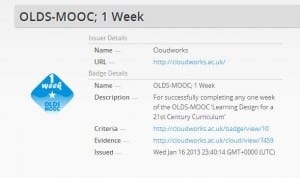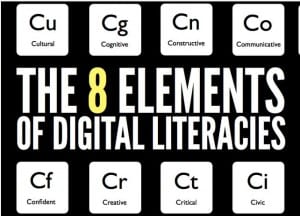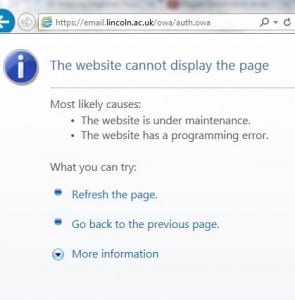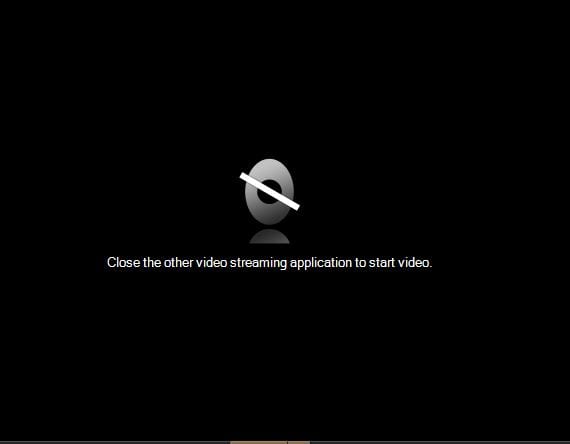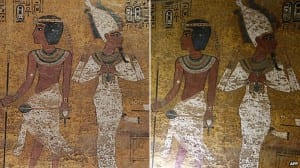I’d forgotten I had this Badge although I thought there were more. I stayed with OLDS-MOOC eight weeks before my group faded and there was no one left to talk to. My OLDs MOOCing is still on Cloudworks http://cloudworks.ac.uk/cloudscape/view/2743 So are the badges. I’ve retrospectively applied for some additional ones hoping no one will notice the time warp.
image from http://backpack.openbadges.org/share/e7f1d70c27db05a8ba1d6c3d9c8e4579/The range of badges has expanded since OLDS-MOOC. I hadn’t appreciated their full functionality so learned a lot from listening to Doug Belshaw at Lincoln today. Most of Doug’s views on digital literacies I agreed with; there’s no one single definition – they are plural, individual and should be co-produced. I liked the Mozilla pedagogy; learning through doing and making and thought the Mozilla X-Ray Goggles http://support.mozilla.org/en-US/products/webmaker/x-ray-goggles was a cool way to get up close and personal with coding. Doug has an impressive online presence from his blogsite, Phd thesis, Essential Elements of Digital Literacies eBook and all his presentation text and graphics from today http://bit.ly/lincoln17dec13
Tomorrow is a workshop with Doug looking at the development of a digital literacies module. It will be interesting to see how many aspects of digital literacies participants bring to the session eg media, information, text, web etc. The eclectic range of subjects covered by the phrase reflects the difficulties involved in trying to enclose or shape them in anyway. Yet it needs to be done if we are to move away from an assumption model which overestimates individual confidence and competence working in digital environments. The longest journey begins with a single step and tomorrow may well be the first footprint.
The Essential Elements of Digital Literacies from Doug Belshaw
TEDxWarwick – Doug Belshaw – The Essential Elements of Digital Literacies (17.29)
Directlink http://www.youtube.com/watch?v=A8yQPoTcZ78
